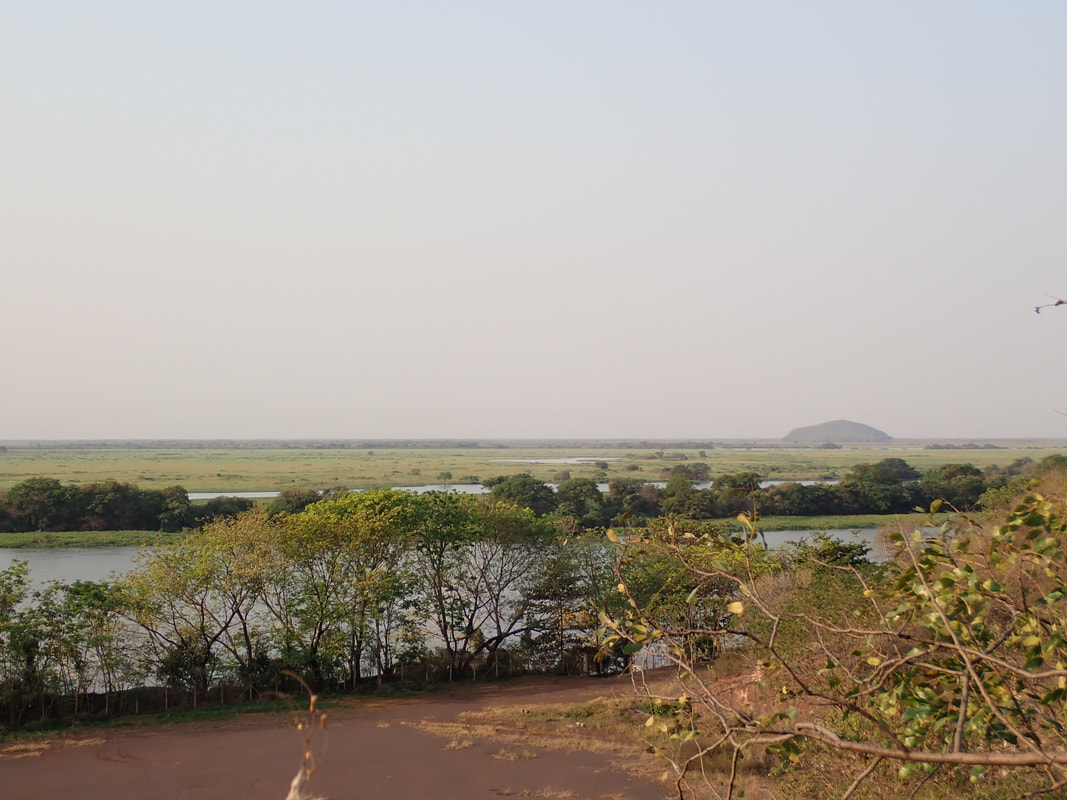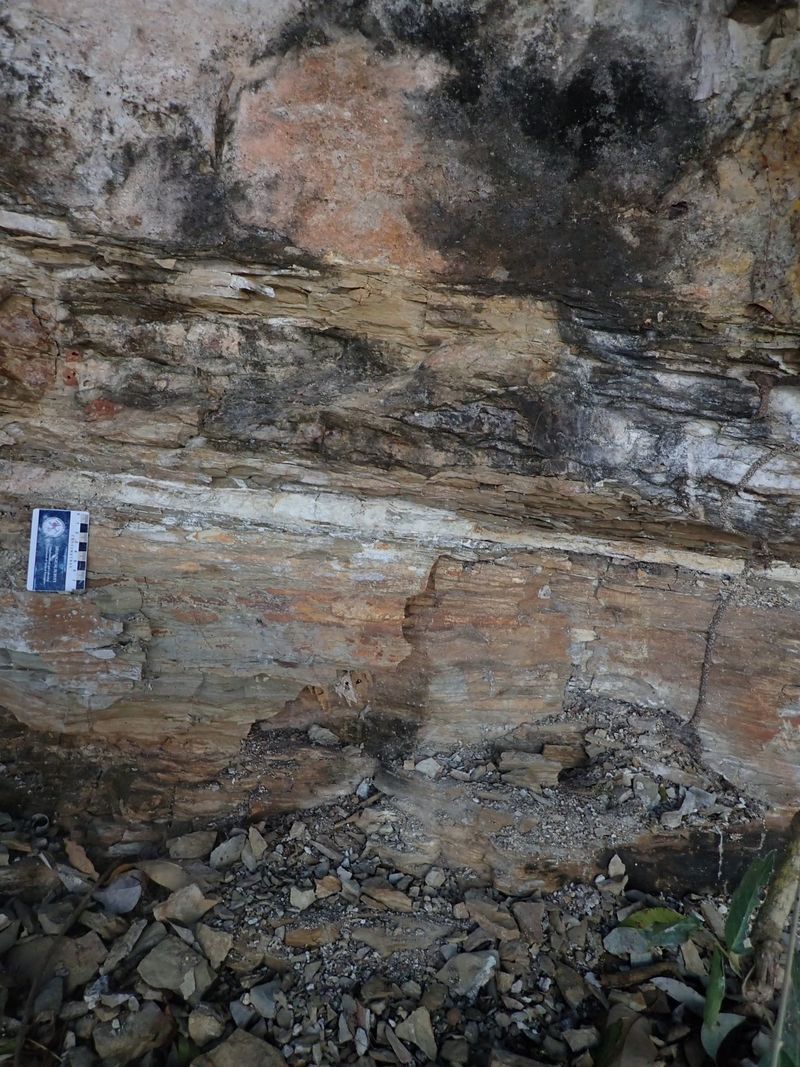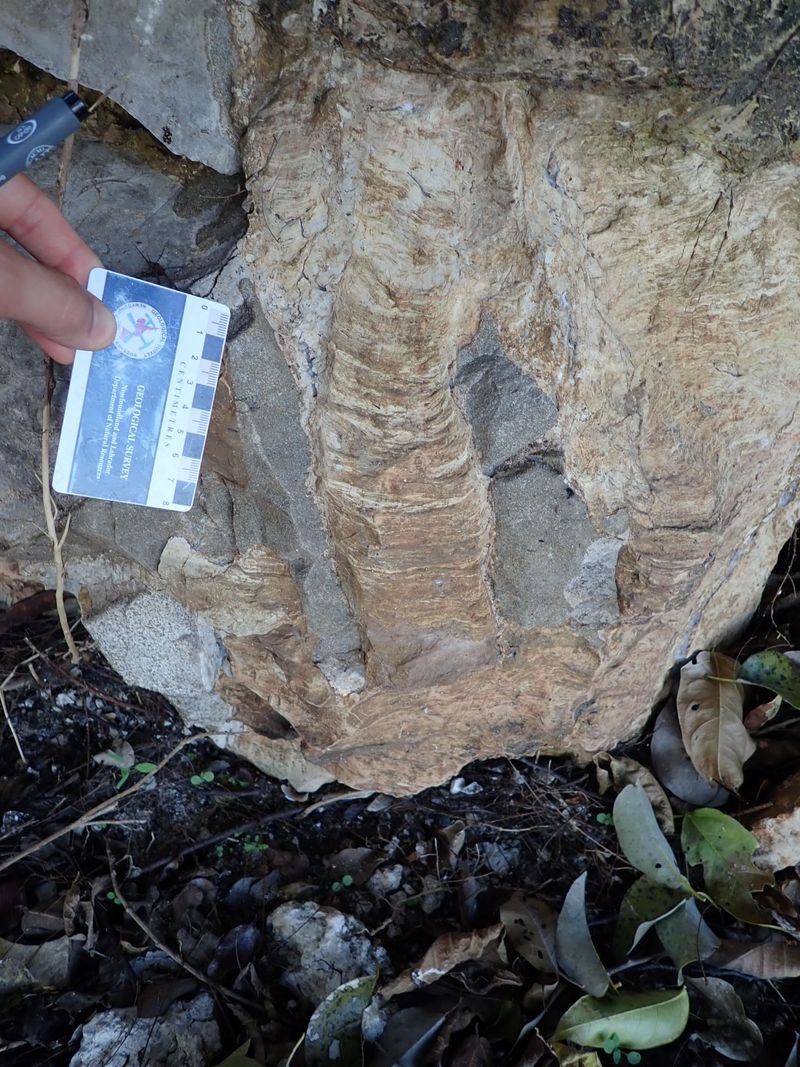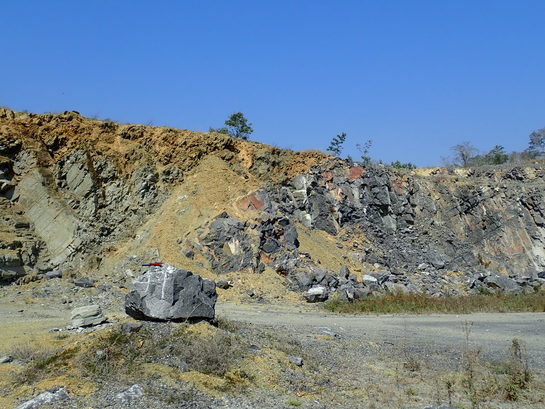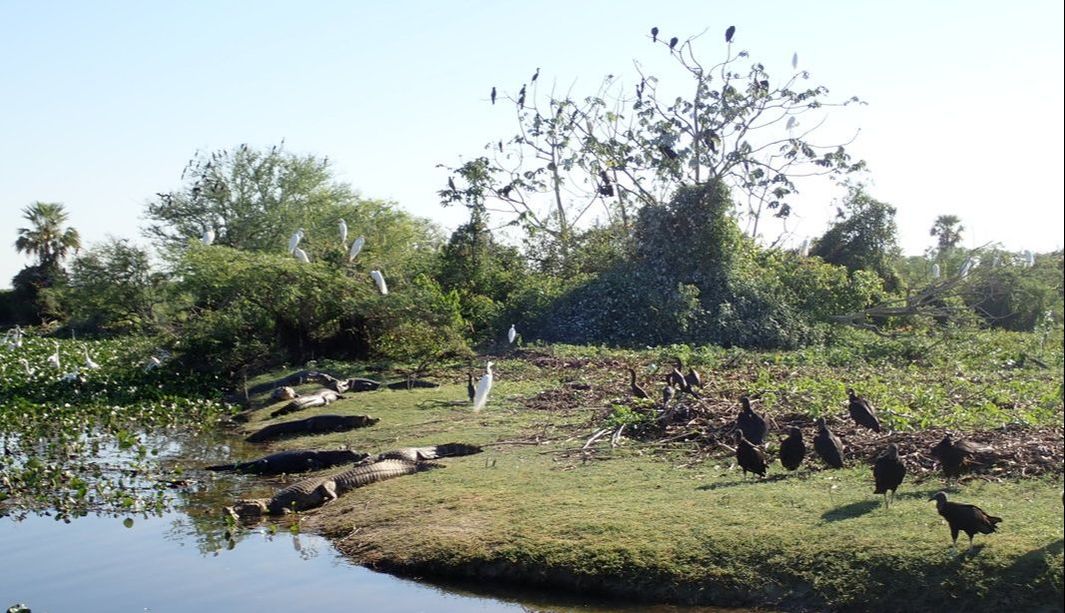|
The richest Ediacaran fossil locality in Brazil is the Corumba region of Mato Grosso do Sul State. Here, rocks of the Corumba Group contain body and trace fossils in carbonates and pelites of the Tamengo and Guaicurus formations. Outcrops generally occur in cliffs along rivers, or in working quarries. Lying in the Pantanal, the region is also exceptional for its diverse animal and plant life. |
|
Geology of the region
The Corumba Group consists of the siliciclastic Cadiueus and Cerradinho formations (of uncertain age and currently unfossiliferous), successively overlain by dolostones of the Boccaina Formation, black limestones and interbedded siltstones and breccias of the Tamengo Formation, and siltstones of the Guaicurus Formation. The Tamengo Formation has been studied for stable carbon and oxygen isotopes (Boggiani et al., 2010). The Corumba Group lies above the Jacadigo Group, which includes a probable Marinoan-equivalent glacial unit (the Puga Formation), siliciclastic units of the Urucum Foramtion, and a banded iron formation (the Santa Cruz Formation). The nature of the contact between the Jacadigo and Corumba groups is not yet well constrained, but it is possible that the Jacadigo Group is early Ediacaran in age. Further information about the geology and stratigraphy of the region can be found in references within recent review papers (Fairchild et al., 2012; Walde et al., 2015). |
|
Palaeobiology of the Corumba Group
Dolostones of the Boccaina Formation contain excellent columnar and domal stromatolites. Siltstones of the Tamengo Formation can contain abundant fragmentary specimens of the tubular fossil Corumbella wernerii (e.g. Babcock et al., 2005). A single specimen of the possible conulariid Paraconularia has also been recovered from this unit (Van Iten et al., 2016). Black limestones of the Tamengo Formation contain Cloudina lucianoi towards the top of the unit (e.g. Adorno et al., 2017). The Guaicurus Formation is likely to be latest Ediacaran - Early Cambrian in age, and possesses sub-millimetre scale pyritised burrows made by meiofaunal organisms. These burrows have morphologies that suggest they may have been made by nematoids (Parry et al., 2017). Specimens of the probable vendotaenid alga Eoholynia corumbensis are also found in the lower Guaicurus Formation (Gaucher et al., 2003). |
|
Other South American Ediacaran sites
The Corumba Group is considered to be a lateral equivalent of the Itapucumi Group, which lies to the south of Corumba in Paraguay, and contains specimens of Cloudina (Warren et al., 2011), alongside other tubular and organic-walled macrofossils that possibly include Namacalathus (Warren et al., 2017). Elsewhere in Brazil, potential Ediacaran macrofossils have been reported from the Bambui Group near Minas Gerais (Warren et al., 2014), and the Itajai Group of Santa Catarina State (described in Guadagnin et al., 2010). Further afield, the Tandilia region of Argentina hosts discoidal impressions that have been interpreted as Ediacaran macrofossils (Arrouy et al., 2016), while the Arroyo del Soldado Group in Uruguay contains stromatolites, microfossils, and specimens of Cloudina (summarised in Gaucher et al., 2003). |
